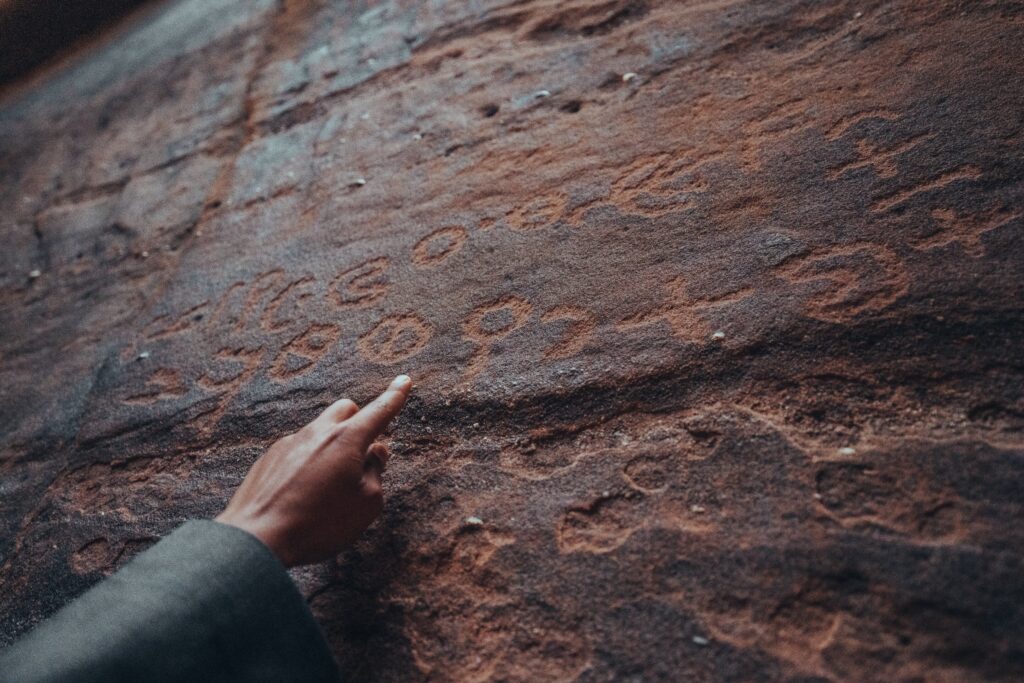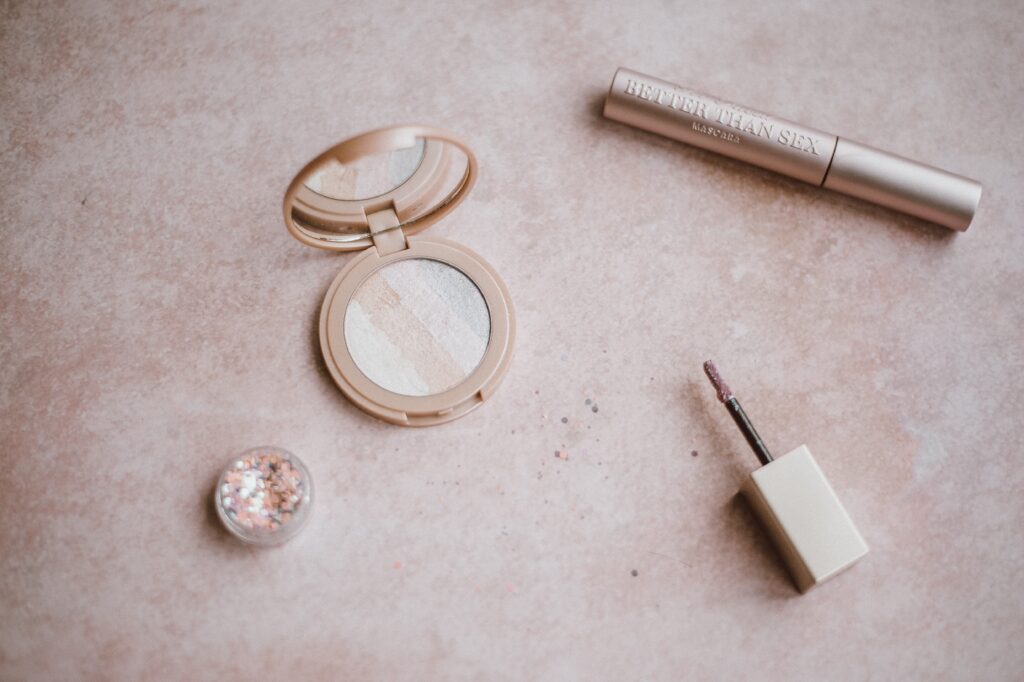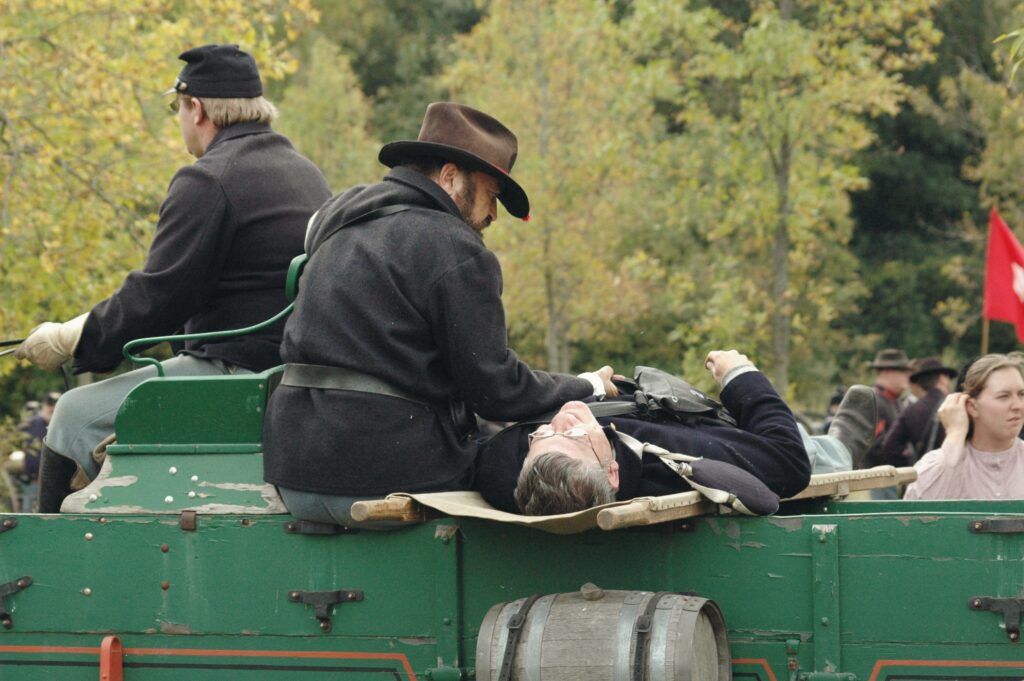Have you ever wondered why actors wear makeup? Beyond the glitz and glamour of the red carpet, there’s a fascinating reason behind this age-old tradition. In this article, we’ll delve into the untold secrets of why actors take to the makeup chair before stepping under the spotlight. From enhancing character portrayal to creating a visual narrative, makeup plays an integral role in the transformative world of acting. So, get ready to uncover the captivating reasons behind the glam and gain a deeper understanding of the artistry that goes into creating unforgettable performances.
Introduction
When you watch a movie or a play, you may be captivated by the actors and their performances, but have you ever wondered why they wear makeup? Makeup has always played a crucial role in the world of acting, enhancing appearances, conveying characterization, and even addressing lighting and camera requirements. In this article, we will explore the importance of makeup in acting, its historical evolution, different types of makeup used in the industry, the psychological impact on actors, the challenges they face, makeup techniques for different genres, the collaborative process between actors and makeup artists, and the impact of makeup on audience perception. So, let’s dive into the world behind the glam and discover why actors wear makeup!
The Importance of Makeup in Acting
Enhancing Appearance and Transformation
One of the primary purposes of makeup in acting is to enhance the actors’ appearances and facilitate their transformation into different characters. Through the skillful use of makeup, actors can change their physical features, such as age, gender, and race, to better fit the roles they are playing. Makeup can help them achieve the desired look, whether it’s making them look older, younger, or even completely altering their appearance. This transformation allows actors to fully immerse themselves in their characters and captivate the audience with believable performances.
Conveying Characterization
Makeup also plays a vital role in conveying the characterization of a role. The way an actor’s face is made up can communicate important information about their character’s personality, emotions, and even their social status. For example, a villain may be given smoky eye makeup and dark lipstick to emphasize their sinister nature, while a protagonist might have a more natural and understated look. Makeup can serve as a visual language, speaking volumes about a character without them uttering a single word, enhancing the storytelling experience for the audience.
Creating Visual Continuity
In the world of film and television, makeup is essential in creating visual continuity. Actors often work on a project for extended periods, and scenes are not always filmed in chronological order. Makeup artists ensure that actors maintain consistent appearances throughout filming, ensuring that any changes in appearance, such as bruises or scars, are accurately replicated from scene to scene. This attention to detail ensures a seamless viewing experience for the audience and helps maintain the believability of the story being told.
Addressing Lighting and Camera Requirements
Another critical aspect of makeup in acting is addressing the specific lighting and camera requirements of a production. Different lighting setups and camera techniques can have a significant impact on an actor’s appearance on screen. Makeup artists work closely with cinematographers and directors to ensure that the actors’ makeup translates well on camera, accounting for factors like exposure, color correction, and even high-definition technology. Properly applied makeup can enhance an actor’s features, highlight their expressions, and help them stand out in the visual storytelling.

Historical Evolution of Makeup Use in Acting
Ancient Origins of Theatrical Makeup
The use of makeup in acting dates back centuries and can be traced back to the ancient origins of theatrical performances. In ancient Greece, actors used masks and makeup to differentiate between characters and convey emotions to the audience. These early makeup techniques were rudimentary but laid the foundation for the use of makeup as a storytelling tool in the theater.
Renaissance Influence on Makeup in Theatre
During the Renaissance period, theatrical performances became more elaborate, and makeup began to play a more significant role in creating characters. Actors would use white lead and vermillion to create contrasting colors on their faces, enhancing their expressions and making their features more visible to the audience. With the rise of Shakespearean plays, elaborate costumes and makeup became an integral part of the theatrical experience, bringing characters to life in vibrant and visually striking ways.
The Birth of Film and Makeup Techniques
With the birth of film in the early 20th century, makeup techniques underwent a significant transformation. The introduction of black and white films presented new challenges, as actors needed to ensure their features were well-defined and visible on screen. Makeup artists developed techniques like contouring and highlighting to enhance the actors’ facial features and create depth and dimension. As technology advanced, color films emerged, allowing for even more creativity in makeup design, with artists using vibrant colors to bring characters to life.
Different Types of Makeup in Acting
Foundation and Concealer
Foundation and concealer form the base of any actor’s makeup. The foundation helps create an even skin tone, covering any blemishes or imperfections, while concealer is used to hide dark circles, scars, or any areas that need extra coverage. The right foundation shade is crucial in achieving a natural look that blends seamlessly with the actor’s skin tone, allowing them to transform into their characters.
Eye Makeup
The eyes are often referred to as the windows to the soul, and eye makeup plays a significant role in expressing emotions and enhancing an actor’s gaze. Eye shadow, eyeliner, and mascara are used to define and accentuate the eyes, creating different effects depending on the character being portrayed. From a smoky eye for a seductive character to natural-looking makeup for a realistic portrayal, eye makeup is versatile in transforming an actor’s appearance.
Lipstick and Lip Liner
Lipstick and lip liner complete the overall look of an actor’s face, adding color and definition to the lips. The choice of lipstick shade can convey different moods and characteristics, whether it’s a bold red for a confident character or a nude shade for a natural appearance. Lip liner helps define the shape of the lips, ensuring a precise application and preventing the lipstick from bleeding or smudging during long hours of filming.
Contouring and Highlighting
Contouring and highlighting techniques have become popular in recent years, and they have also found their way into the world of acting. These techniques involve using dark and light shades of makeup to create the illusion of different face shapes and features. Contouring can make an actor’s face appear slimmer, while highlighting can accentuate their cheekbones or other desired features. These techniques help actors achieve the desired look and ensure that their facial features are more visible on screen.
Special Effects Makeup
In addition to everyday makeup, actors often require special effects makeup to transform into fantastical characters or to portray injuries, wounds, or other physical changes. Special effects makeup can involve prosthetics, fake blood, and intricate application techniques to create realistic and convincing effects. Makeup artists skilled in this area can bring creatures, monsters, and otherworldly beings to life, adding an extra layer of visual storytelling to the performance.

The Psychological Impact of Actors Wearing Makeup
Boosting Confidence and Transforming Identity
Wearing makeup has a psychological impact on actors, contributing to their confidence and enabling them to transform into different identities. Makeup can act as a disguise, allowing actors to shed their own persona and step into the shoes of their characters. This transformation can boost their confidence, helping them embody the character’s traits and mannerisms fully. The act of applying makeup can be both a ritual and a mindset shift, mentally preparing actors to step into their roles and embrace the challenges of performing.
Creating a Connection between Actors and Characters
Makeup serves as a bridge between actors and the characters they portray, enabling them to establish a deeper connection. Through the process of applying makeup, actors can physically and mentally immerse themselves in their roles, stepping closer to understanding their characters’ experiences and motivations. The act of putting on makeup can be a meditative moment, allowing actors to inhabit the character’s world and better convey their emotions and complexities to the audience.
Theatrical Origins of Psychological Effects
The psychological impact of wearing makeup can be traced back to the theatrical traditions of ancient times. In ancient Greece, actors would wear masks and elaborate makeup to physically transform into their characters. This transformation allowed them to access different emotional states, communicate with the audience, and explore complex psychological depths. These ancient practices laid the groundwork for the concept of makeup as a tool for psychological transformation, creating a link between the actor and the character.
Challenges Actors Face with Makeup
Allergic Reactions and Skin Sensitivity
One of the challenges actors face when wearing makeup is the potential for allergic reactions or skin sensitivity. The extensive use of cosmetics and the long hours of wearing them can sometimes cause skin irritations, rashes, or even breakouts. To mitigate these risks, actors and makeup artists must carefully select hypoallergenic products and perform patch tests to ensure compatibility with the actor’s skin. Regular skincare routines and proper makeup removal techniques are also essential in maintaining the health and condition of the skin.
Long Hours of Application and Removal
Another challenge actors face is the long hours required for makeup application and removal. For film and television productions, actors may spend several hours in the makeup chair before filming even begins, as intricate makeup designs or prosthetics may need to be applied. This prolonged process can be physically and mentally exhausting, requiring patience and endurance from the actors. Additionally, when the day’s shoot is over, actors must also undergo meticulous makeup removal to avoid any damage to their skin.
Maintaining Consistency throughout Filming
Maintaining consistency in makeup throughout filming can be a challenge, especially when scenes are not shot in chronological order. Makeup artists and actors must meticulously document each look, taking note of specific products, colors, and application techniques to ensure that the makeup can be replicated accurately for subsequent scenes. Any changes or alterations to the character’s appearance should be carefully coordinated to maintain the visual continuity of the story.
Budget and Resource Limitations
Budget and resource limitations can also pose challenges for actors and makeup artists. Productions with limited resources may have to find creative solutions and work with a restricted range of products or equipment. In such cases, actors and makeup artists must collaborate closely and make the most of the available resources to achieve the desired looks. Adapting to different budgets and resources can sometimes inspire unique and innovative approaches to makeup design, showcasing the talent and versatility of the artists involved.

Makeup Techniques Used for Different Genres
Natural and Minimalist Makeup in Realistic Dramas
In realistic dramas, where the focus is on authentic storytelling, makeup is often kept natural and minimalist. The aim is to create a look that appears effortless, as if the actors are not wearing any makeup. Subtle foundation, concealer, and a light touch of eye and lip makeup are used to enhance the actors’ features without drawing attention away from the story. This approach ensures that the performances and dialogue take center stage and that the makeup remains understated and true to life.
Bold and Expressive Makeup in Fantasy or Sci-Fi Films
In the realm of fantasy or science fiction films, makeup takes on a more grandiose and expressive role. Elaborate and creative designs are employed to transform actors into fantastical creatures, aliens, or otherworldly beings. The use of vibrant colors, intricate patterns, and bold accessories helps transport the audience to imaginary worlds and adds an extra layer of visual spectacle to the storytelling. This genre allows makeup artists to push the boundaries of their creativity and bring unforgettable characters to life.
Historical Accuracy in Period Films
Period films require meticulous attention to detail, and makeup plays a crucial role in recreating historically accurate looks. Makeup artists conduct extensive research on the beauty standards and trends of the specific time period portrayed in the film. They use period-appropriate techniques and products to ensure that the actors’ makeup aligns with the historical context. Whether it’s recreating the glamorous looks of the 1920s or the powdered faces of the Victorian era, the makeup must be as authentic as possible to transport the audience back in time.
Glamorous and High-Fashion Looks in Romantic Comedies
Romantic comedies often feature glamorous and high-fashion looks that reflect the playful and lighthearted nature of the genre. Makeup artists work closely with the actors and costume designers to create harmonious looks, complementing the characters’ personalities and the overall visual aesthetic. Bold lip colors, flawless complexions, and defined features are common in this genre, adding a touch of elegance and sophistication to the characters’ appearances. The goal is to create looks that are aspirational, leaving the audience enchanted by the on-screen romance and beauty.
The Collaborative Process of Actors and Makeup Artists
Understanding the Actor’s Vision and Characterization
The collaboration between actors and makeup artists is a crucial aspect of creating the desired looks for a performance. Makeup artists start by having detailed discussions with actors to understand their vision for the character and the emotions they want to convey. By gaining insights into the character’s backstory, motivations, and personality, the makeup artist can make informed decisions about how to enhance the actor’s appearance and support their performance. This collaborative process ensures that the actor’s vision is realized through the makeup design.
Working with Different Skin Types and Features
Actors come from diverse backgrounds, with unique skin types, tones, and features, presenting an exciting challenge for makeup artists. Skilled artists must have a deep understanding of various skin types and the ability to work with different facial features to accentuate the actor’s natural beauty while transforming them into their characters. By utilizing a range of techniques, products, and tools, makeup artists can adapt to the specific needs and characteristics of each actor, ensuring that their makeup enhances their individuality and creates a seamless transition into the character.
Utilizing Makeup to Enhance Acting Techniques
Makeup is not simply a cosmetic enhancement; it can be utilized to enhance the acting techniques employed by actors. For instance, subtle makeup techniques, such as contouring, can help actors emphasize their expressions, making them more visible even from a distance. Additionally, makeup can be used strategically to draw attention to pivotal moments or highlight certain emotions in a scene. By collaborating closely with actors, makeup artists can create looks that leverage the power of makeup as a storytelling tool, elevating the actors’ performances.
Building Trust and Communication
The collaboration between actors and makeup artists relies on a foundation of trust and open communication. Actors must feel comfortable expressing their ideas and concerns, knowing that the makeup artist will listen to their needs and respect their vision. Makeup artists, on the other hand, must be receptive to feedback and willing to adapt their designs to meet the actors’ expectations. This mutual trust and understanding contribute to a harmonious working relationship that leads to the creation of impactful and visually stunning makeup looks.
The Impact of Makeup on Audience Perception
Creating Immersive and Believable Characters
Makeup plays a significant role in creating immersive and believable characters that captivate and engage the audience. When an actor’s appearance is thoughtfully crafted through makeup, it helps the audience suspend disbelief and invest in the narrative. Makeup can transform actors into entirely new individuals, allowing the audience to connect with characters on a deeper level. The ability to see a character brought to life through makeup adds a layer of realism and authenticity to the storytelling experience.
Establishing Visual Cues and Symbolism
Makeup can also serve as a powerful visual cue, conveying symbolism and subtle messages to the audience. The choice of colors, textures, and styles can evoke specific emotions or suggest certain traits about a character. For example, a character with vibrant and playful makeup may be seen as youthful and energetic, while a character with muted and somber colors may be interpreted as melancholic or reserved. These visual cues act as non-verbal signals, providing valuable insights into the characters’ personalities and motivations.
Influencing Cultural Ideals and Beauty Standards
One of the more profound impacts of makeup in acting is its influence on cultural ideals and beauty standards. The characters portrayed on screen often embody societal notions of beauty, and their makeup choices contribute to shaping these ideals. When actors wear makeup that aligns with conventional beauty standards, it can reinforce existing expectations and perceptions. However, makeup can also challenge these standards by celebrating diversity, embracing unique features, and portraying unconventional beauty. By presenting a range of makeup styles and looks, actors and makeup artists can inspire a more inclusive and accepting understanding of beauty.
Conclusion
In the world of acting, makeup is far more than just a cosmetic enhancement. It plays a multi-faceted role in enhancing appearances, conveying characterization, addressing specific technical requirements, and even influencing audience perception. Whether it’s the historical accuracy of period films or the imaginative transformations in fantasy genres, makeup artists collaborate closely with actors to bring characters to life. The journey of an actor involves overcoming challenges, maintaining consistency, and embracing the psychological impact of makeup. Through this collaborative process, actors and makeup artists strive to create immersive performances that captivate audiences. So, the next time you watch a movie or a play, take a moment to appreciate the incredible artistry and skill that goes into the makeup worn by the actors you see on screen. It is through this artistry that they transport us into worlds both real and imagined, giving life to characters and stories that stay with us long after the final curtain falls.
